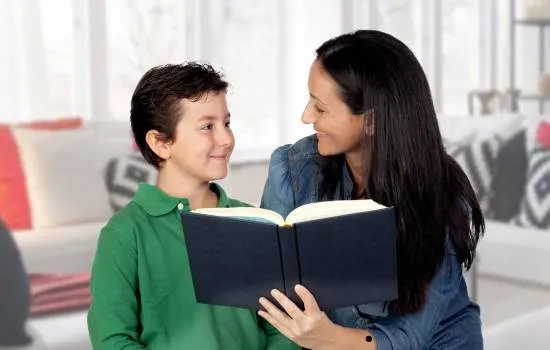Advertisements
Teaching children to read in today's digital world is a task that has become more accessible thanks to technology.
With the advancement of mobile devices and the development of interactive educational tools, children have the opportunity to learn autonomously and dynamically.
Different applications to teach children to read have been designed with modern teaching methods, facilitating the literacy process through fun and participatory activities.
Advertisements
Access to these resources allows children to become familiar with letters and words from an early age, improving their comprehension skills and strengthening their confidence in reading.
See also
- The best apps to create montages, videos and add music
- Natural Elixir for a Clean and Healthy Body
- New app for reading messages. Stay informed!
- The Art of the Soundtrack: Movies with Unforgettable Music
- Turn Your Phone Into a Tape Measure to Measure Everything!
In addition, these apps can be adapted to different learning levels, ensuring that each child receives the right instruction at their own pace. For parents and educators, using these tools represents an excellent way to complement traditional teaching and make learning a more engaging and effective process.
Advertisements
The importance of technology in children's literacy
Literacy is one of the most important stages in children's development, as it is at this time that they begin to understand the world through words. With technological evolution, educational applications have become an excellent alternative to complement traditional learning. They allow children to learn autonomously, in a fun and interactive way, facilitating the absorption of content.
The use of these applications also contributes to the inclusion of children with learning difficulties, offering personalized methods that can be adapted to the pace of each student. In addition, they allow parents to closely follow the development of their children, actively participating in the educational process.
Benefits of apps for teaching reading
The educational applications They present a number of benefits for children's literacy, including:
- Interactive learning: games and fun activities make the experience more engaging.
- Individualized follow-up: each child can progress at his or her own pace.
- Ease of access: can be used anytime, anywhere.
- Diversity of content: In addition to literacy, many apps offer math, reading, and writing activities.
Three apps to teach children to read
With the wide variety of options available, we have selected three of the best apps to teach little ones to read:
1. Reading and Counting
Read and Count is a Brazilian app aimed at children up to 8 years old. It covers everything from teaching the letters of the alphabet to basic math concepts such as addition and subtraction. It also introduces children to Brazilian Sign Language (Libras), animal names, colors, and musical instruments. Its colorful and friendly design facilitates learning through educational games and progressive challenges. Parents can follow their children's performance through detailed reports showing their progress.
2. Writing and Reading
This app focuses on letter recognition and word formation. It uses interactive games to encourage children to practice writing and reading, improving memory and vocabulary. It includes exercises in handwriting, picture-word association, and phonics, promoting multi-sensory learning. In addition, it allows you to customize difficulty levels and adjust activities according to the child's progress, ensuring a learning experience tailored to each user.
3. Magical Alphabet
Magic Alphabet combines sound and image to aid in learning letters and words. Activities include completing words, unscrambling syllables, and listening for correct pronunciation. It also features themed mini-games that reinforce letter and sound memorization. The app is designed to keep children motivated through rewards and challenges, making it a useful tool for both home and classroom learning.
How to make the most of literacy apps
To make the use of these applications really effective, some tips can make a difference:
- Monitor progress: Observe the child's progress and offer positive incentives.
- Set up a study schedule: creating a routine helps maintain constant learning.
- Combine with other methods: reading stories, educational music and games are also essential.
- Avoid excesses: The time spent using applications should be balanced to avoid digital fatigue.
The relationship between learning and a healthy lifestyle
While literacy is essential, it is also important to take care of children's health and well-being. A balanced diet and healthy habits help cognitive development, contributing to more efficient learning.
Parents and guardians should encourage physical activity, ensuring that children have the energy and willingness to learn. Screen time should be balanced with outdoor time and social activities.

The impact of diets and weight loss on children's concentration
Nutrition plays a crucial role in children's learning ability. Nutrient-rich foods such as fish, fruits and vegetables are essential for keeping concentration and memory sharp. In contrast, diets poor in vitamins can negatively affect school performance.
Studies show that children with healthy eating habits tend to have better academic performance and a greater ability to retain information. Therefore, combining the use of educational apps with a balanced diet can be the key to more effective learning.
Conclusion: Technology as an ally in the learning process
Reading apps are amazing tools to complement children's literacy. They make learning more dynamic, interactive and fun, helping children develop essential skills from an early age.
If you want to provide an innovative learning experience for your child, explore the recommended apps and see how they can transform the educational process. By combining technology, healthy routine, and family incentive, the path to literacy will be even more enjoyable and efficient.
